 Your new post is loading...
 Your new post is loading...
New measures to boost key competences and digital skills, as well as the European dimension of education
Brussels, 17 January 2018
To follow up on the Gothenburg Summit, the European Commission has today adopted new initiatives to improve key competences and digital skills of European citizens, to promote common values and pupils' awareness of the functioning of the European Union.
The new proposals come only two months after European Heads of State and Government discussed education, training and culture at the Gothenburg Summit in November 2017. They are intended to reduce socio-economic inequalities, whilst sustaining competitiveness in order to build a more united, stronger and more democratic Europe. 1. A Council Recommendation on Key Competences for Lifelong Learning: Building on the Recommendation on Key Competences adopted in 2006, this proposal brings forward important updates reflecting the rapid evolution of teaching and learning since then. It aims to improve the development of key competences of people of all ages throughout their lives and to provide guidance to Member States on how to achieve this objective. A particular focus is placed on promoting entrepreneurial drive and innovation-oriented mindsets in order to unlock personal potential, creativity and self-initiative. Moreover, the Commission is recommending steps to foster competences in science, technology, engineering and mathematics (STEM) and motivate more young people to embark on a career in these fields. The proposals made today should also be seen as part of the answer to urgently improve European education systems to face the many challenges highlighted in the latest PISA survey. More generally, the measures will support Member States in better preparing learners for changing labour markets and for active citizenship in more diverse, mobile, digital and global societies. 2. A Digital Education Action Plan that outlines how the EU can help people, educational institutions and education systems better adapt to life and work in an age of rapid digital change by: making better use of digital technology for teaching and learning; developing the digital competences and skills needed for living and working in an age of digital transformation; and improving education through better data analysis and foresight. Initiatives include supporting schools with high-speed broadband connections, scaling up a new self-assessment tool for schools on the use of technology for teaching and learning (SELFIE) and a public awareness campaign on online safety, media literacy and cyber hygiene. 3. A Council Recommendation on common values, inclusive education and the European dimension of teaching: This initiative proposes ways in which education can help young people understand the importance of and adhere to common values set out in Article 2 of the Treaty of the European Union. It aims at strengthening social cohesion and contributing to fight the rise of populism, xenophobia, divisive nationalism and the spreading of fake news. The proposal also strengthens inclusive education to promote quality education for all pupils as well as the European dimension of teaching, so children also learn about Europe's common heritage and diversity and get a good understanding of the functioning of the EU. To support these aims, the Commission will take steps to increase virtual exchanges among schools, notably through the successful e-Twinning network, and boost school mobility through the Erasmus+ programme. Learn more / En savoir plus / Mehr erfahren: https://www.scoop.it/t/21st-century-learning-and-teaching/?&tag=EU
Via Gust MEES
Vint Cerf is known as a "father of the Internet," and like any good parent, he worries about his offspring -- most recently, the IoT.
"Sometimes I'm terrified by it," he said in a news briefing Monday at the Heidelberg Laureate Forum in Germany. "It's a combination of appliances and software, and I'm always nervous about software -- software has bugs."
The Internet of Things will offer the ability to manage many of the appliances we depend on, acknowledged Cerf, who won the Turing Award in 2004. With its ability to continuously monitor such devices, it also promises new insight into our use of resources, he said.
Devices such as Google's Nest thermostat, for instance, can "help me decide how well or poorly I've chosen my lifestyle to minimize cost and my use of resources -- it can be an important tool," he said.
As with so many technological tools, however, there are plenty of potential downsides. Safety is one of them.
Cerf is now vice president and chief Internet evangelist at Google, but you won't find him enjoying any of the massage chairs the company provides for its employees. "I know they're run by software -- I worry they will fold up on me," he quipped.
As more such appliances are run by software, people will be increasingly reliant on programmers' ability to write good code, he pointed out.
"It's fraught with issues, some technical and some legislative," he said. "Who is liable when an appliance doesn't work the way it should, and what if that's a software question?"
Learn more / En savoir plus / Mehr erfahren:
http://www.scoop.it/t/21st-century-learning-and-teaching/?tag=Internet+of+Things
http://www.scoop.it/t/securite-pc-et-internet/?tag=Internet+of+things
http://globaleducationandsocialmedia.wordpress.com/2014/01/21/why-is-it-a-must-to-have-basics-knowledge-of-cyber-security-in-a-connected-technology-world/
http://www.scoop.it/t/securite-pc-et-internet/?tag=Cars
Via Gust MEES
Successfully hiding messages in images has already been done, but is it possible to deliver an exploit in one - and run it?
Saumil Shah, founder and CEO of Net-Square, has demonstrated at the Hack in the Box Amsterdam 2015 that it's possible, and has posited that such attacks are more than likely to crop up in the near future, as he can't be the only one who thought about this, tried it and succeeded.
He is not the first one to try and hide exploits in images. But he created Stegosploit, a technology that lets attackers deliver executable JavaScript code via images, and trigger them, too.
The technology opens the door for attacks executed as simply as pointing users to sites containing a booby-trapped image or delivering the image via email. By virtue of simply viewing the image, the exploit code is triggered and can deliver malware on the victim's computer.
"A single file can be rendered as a perfectly valid HTML file, executed as a perfectly valid Javascript file, and displayed as a perfectly valid image, all at the same time," he explains.
"Stegosploit is the result of malicious exploit code hidden within pixels of the image carrying it. The image however, is a multi format container, which also contains the code required to decode the steganographically encoded pixels to execute the exploit."
This type of attack won't show in network traffic, he pointed out, be invisible to the naked eye, and the image will "autorun" in the browser.
In order to make the attack payload look harmless and not trigger defenses, Shah split it into two: dangerous pixel data (exploit code), and a safe decoder.
Via Gust MEES
An advanced piece of malware, known as Regin, has been used in systematic spying campaigns against a range of international targets since at least 2008. A back door-type Trojan, Regin is a complex piece of malware whose structure displays a degree of technical competence rarely seen. Customizable with an extensive range of capabilities depending on the target, it provides its controllers with a powerful framework for mass surveillance and has been used in spying operations against government organizations, infrastructure operators, businesses, researchers, and private individuals.
It is likely that its development took months, if not years, to complete and its authors have gone to great lengths to cover its tracks. Its capabilities and the level of resources behind Regin indicate that it is one of the main cyberespionage tools used by a nation state.
As outlined in a new technical whitepaper from Symantec, Backdoor.Regin is a multi-staged threat and each stage is hidden and encrypted, with the exception of the first stage. Executing the first stage starts a domino chain of decryption and loading of each subsequent stage for a total of five stages. Each individual stage provides little information on the complete package. Only by acquiring all five stages is it possible to analyze and understand the threat.
Via Gust MEES
DOS ATTACKS ON THE RISE | Cyber Security | Infographic
Dubbed “AirHopper” by the researchers at Cyber Security Labs at Ben Gurion University, the proof-of-concept technique allows hackers and spies to surreptitiously siphon passwords and other data from an infected computer using radio signals generated and transmitted by the computer and received by a mobile phone. The research was conducted by Mordechai Guri, Gabi Kedma, Assaf Kachlon, and overseen by their advisor Yuval Elovici.
The attack borrows in part from previous research showing how radio signals (.pdf) can be generated by a computer’s video card (.pdf). The researchers in Israel have developed malware that exploits this vulnerability by generating radio signals that can transmit modulated data that is then received and decoded by the FM radio receiver built into mobile phones. FM receivers come installed in many mobile phones as an emergency backup, in part, for receiving radio transmissions when the internet and cell networks are down. Using this function, however, attackers can turn a ubiquitous and seemingly innocuous device into an ingenious spy tool. Though a company or agency may think it has protected its air-gapped network by detaching it from the outside world, the mobile phones on employee desktops and in their pockets still provide attackers with a vector to reach classified and other sensitive data.
Via Gust MEES
More than 200 organisations and 400 cyber-security professionals from 29 European countries are testing their readiness to counter cyber-attacks in a day-long simulation, organised by the European Network and Information Security Agency (ENISA). In Cyber Europe 2014 experts from the public and private sectors including cyber security agencies, national Computer Emergency Response Teams, ministries, telecoms companies, energy companies, financial institutions and internet service providers are testing their procedures and capabilities against in a life-like, large-scale cyber-security scenario.
Via Gust MEES
F-Secure Security Labs brings you the latest online security news from around the world. Ensure that you are up-to-date with the latest online threats to guarantee your online wellbeing.
Via Gust MEES
|
Attackers have installed malicious firmware on nearly 200 Cisco routers used by businesses from over 30 countries.
Via Gust MEES
The Internet of Everything (IoE) represents the next “world-changing” revolution, after the Industrial Revolution of 1750 – 1900, and following the Computer & Internet revolution which started in the 1950’s. It is an exciting scenario in which objects, personal devices, even animals communicate, take Intelligent decisions, and autonomous actions on their own without human interaction. This revolution will completely transform industrial sectors and the entire world, for all of us, in ways as powerful as the Industrial Revolution and even more. It is our future, and it is happening now.
How is it happening? For an Evolution of Technologies, and with a Revolution of Minds… Learn more: - http://www.scoop.it/t/securite-pc-et-internet/?tag=smart-TV - http://www.scoop.it/t/21st-century-learning-and-teaching/?tag=Internet+of+Things - http://www.scoop.it/t/securite-pc-et-internet/?tag=Internet+of+things - http://globaleducationandsocialmedia.wordpress.com/2014/01/21/why-is-it-a-must-to-have-basics-knowledge-of-cyber-security-in-a-connected-technology-world/
Via Gust MEES, Lynnette Van Dyke
The 27001 Academy has produced an informative infographic that illustrates key details of the nearly 800 reported data breaches in the U.S. that occurred in 2014 - up about 20% from 2013.
Surprisingly, despite the sharp increase in the number of breaches seen last year, the actual number of records that were compromised was down more than
Learn more:
- http://www.scoop.it/t/securite-pc-et-internet/?tag=DATA-BREACHES
Via Gust MEES
The Internet has by and large been a cause for good, driving economic growth across developed and emerging economies, connecting individuals and communities to previously unattainable services, and propelling innovation online, as well as offline. Today, all over the world public utilities, banks, and governments use the Internet, cloud services, and mobile technology to enhance their productivity. Unfortunately, the benefits of greater connectivity have also brought about increased information
Via Gust MEES
How many of these hacker personas are you dueling with in your organization?
Via Gust MEES, Next Level
Recently, research was published identifying a Tor exit node, located in Russia, that was consistently and maliciously modifying any uncompressed Windows executables downloaded through it. Naturally this piqued our interest, so we decided to peer down the rabbit hole. Suffice to say, the hole was a lot deeper than we expected! In fact, it went all the way back to the notorious Russian APT family MiniDuke, known to have been used in targeted attacks against NATO and European government agencies.
The malware used in this case is, however, not a version of MiniDuke. It is instead a separate, distinct family of malware that we have since taken to calling OnionDuke.
Learn more:
- http://www.scoop.it/t/securite-pc-et-internet/?tag=TOR
Via Gust MEES
Learning To Become a GOOD Digital Citizen | Digital CitizenShip | How To? Well, there is a lot of different views! WE will explore WHAT could be THE BEST way to teach and to learn about Digital...
Via Gust MEES, Next Level
|



 Your new post is loading...
Your new post is loading...

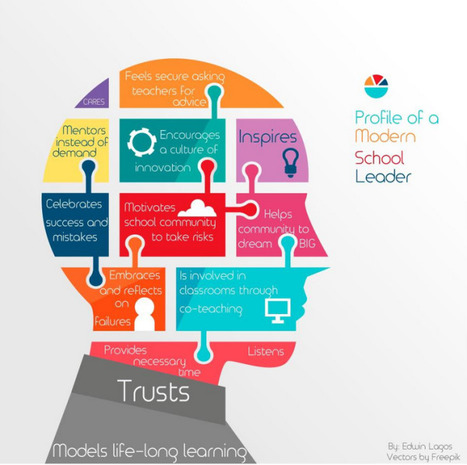

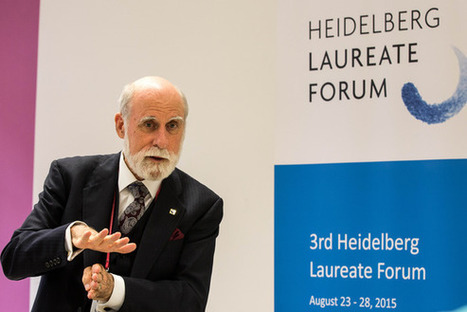

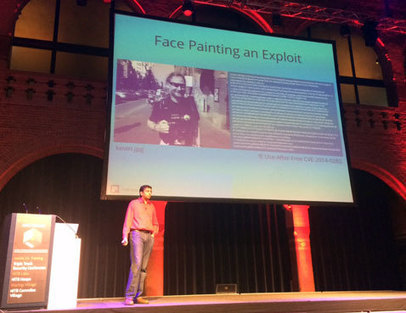
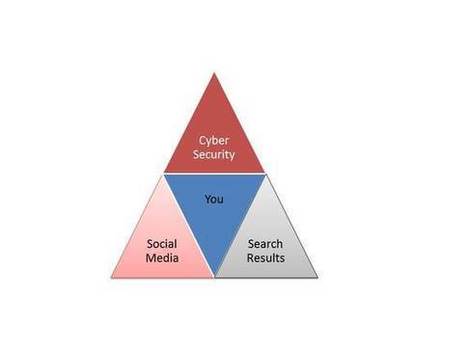
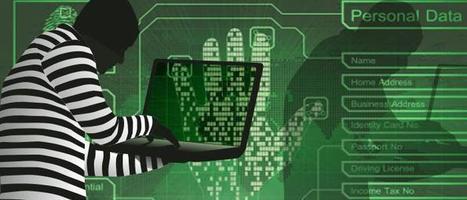

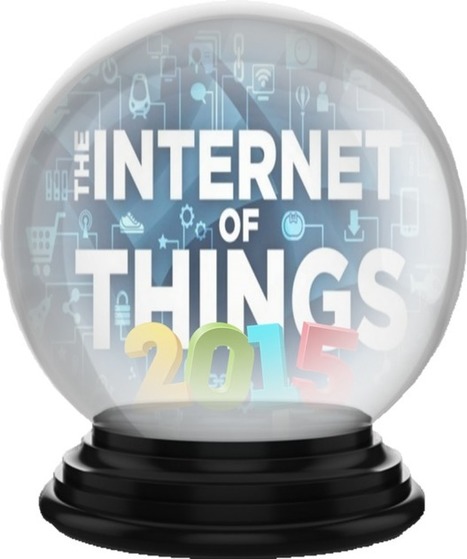
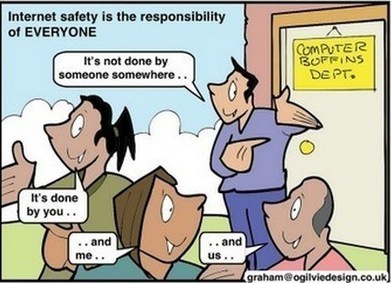







![H1 2014 Threat Report - F-Secure [Infographic] | E-Learning-Inclusivo (Mashup) | Scoop.it](https://img.scoop.it/3WKggSg7n-Fjl4tKZAeUKDl72eJkfbmt4t8yenImKBVvK0kTmF0xjctABnaLJIm9)

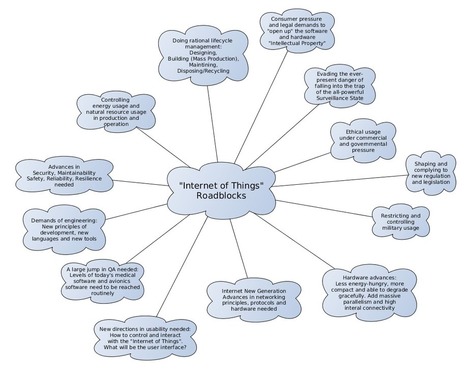

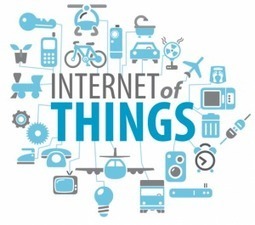


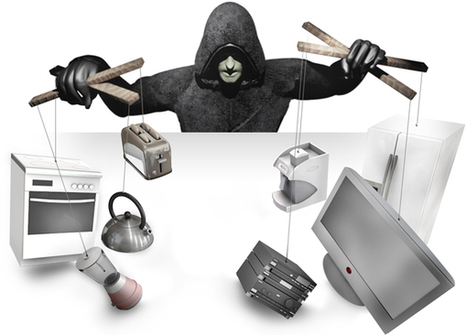



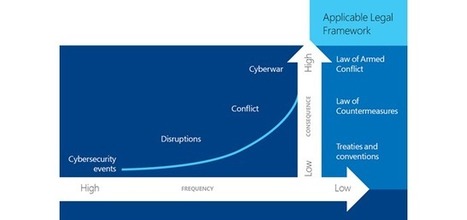



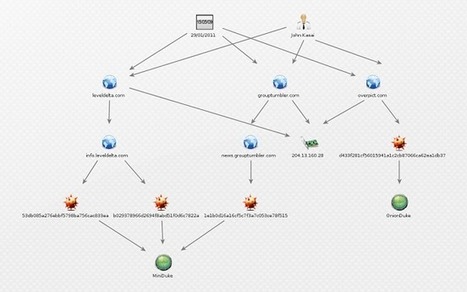
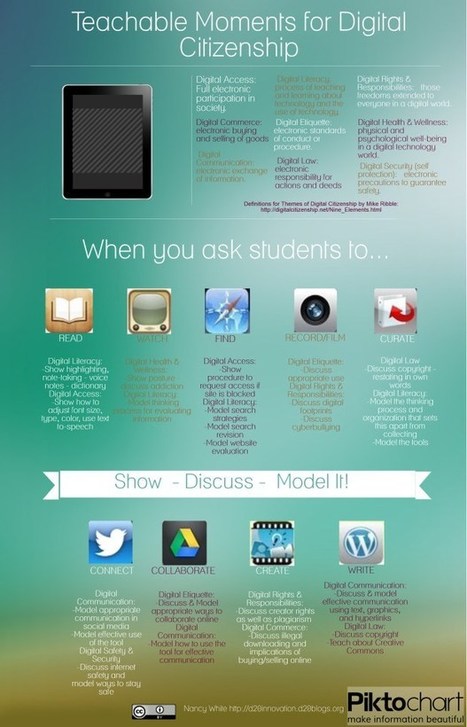








1. A Council Recommendation on Key Competences for Lifelong Learning: Building on the Recommendation on Key Competences adopted in 2006, this proposal brings forward important updates reflecting the rapid evolution of teaching and learning since then. It aims to improve the development of key competences of people of all ages throughout their lives and to provide guidance to Member States on how to achieve this objective. A particular focus is placed on promoting entrepreneurial drive and innovation-oriented mindsets in order to unlock personal potential, creativity and self-initiative. Moreover, the Commission is recommending steps to foster competences in science, technology, engineering and mathematics (STEM) and motivate more young people to embark on a career in these fields. The proposals made today should also be seen as part of the answer to urgently improve European education systems to face the many challenges highlighted in the latest PISA survey. More generally, the measures will support Member States in better preparing learners for changing labour markets and for active citizenship in more diverse, mobile, digital and global societies.
2. A Digital Education Action Plan that outlines how the EU can help people, educational institutions and education systems better adapt to life and work in an age of rapid digital change by:
making better use of digital technology for teaching and learning;
developing the digital competences and skills needed for living and working in an age of digital transformation; and
improving education through better data analysis and foresight.
Initiatives include supporting schools with high-speed broadband connections, scaling up a new self-assessment tool for schools on the use of technology for teaching and learning (SELFIE) and a public awareness campaign on online safety, media literacy and cyber hygiene.
3. A Council Recommendation on common values, inclusive education and the European dimension of teaching: This initiative proposes ways in which education can help young people understand the importance of and adhere to common values set out in Article 2 of the Treaty of the European Union. It aims at strengthening social cohesion and contributing to fight the rise of populism, xenophobia, divisive nationalism and the spreading of fake news. The proposal also strengthens inclusive education to promote quality education for all pupils as well as the European dimension of teaching, so children also learn about Europe's common heritage and diversity and get a good understanding of the functioning of the EU. To support these aims, the Commission will take steps to increase virtual exchanges among schools, notably through the successful e-Twinning network, and boost school mobility through the Erasmus+ programme.
Learn more / En savoir plus / Mehr erfahren:
https://www.scoop.it/t/21st-century-learning-and-teaching/?&tag=EU